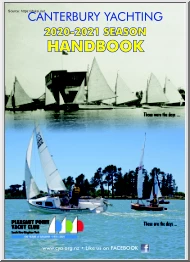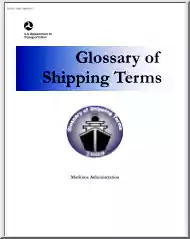Nincs még értékelés. Legyél Te az első!
Mit olvastak a többiek, ha ezzel végeztek?
Tartalmi kivonat
BOOKS & VIDEOS SHORT TAKES SAILING ALONE AROUND THE WORLD (AND VOYAGEOF THE L RDADE) ByJoshua Slocum Edited and with commentaryby Waiter MagnesTel(er. t 958,382 pp, Colher Books (paperback) Macmillan Publishing Co, NY Reviewed by David A. Brooks E V E R Y O C E A N O G R A P H E R S bookshelf should be graced with a few good sea stories, to maintain touch with reality. Tucked in among the Conrad and Melville volumes, perhaps snuggled up to an illustrated Coleridge, should be a well-thumbed copy of Joshua Slocums "Sailing Alone Around the World." Few books send forth such a tangy breeze of salt air. Slocum was a hard-bitten Yankee who spent most of his life afloat and as little of it as possible on dry land. In his early years, Slocum skippered sailing merchant vessels, culminating with the fine lofty ship Northern Li,~hts, 1800 tons, of which he was master and part owner; but "Sailing Alone" tells of a different tack. Despondent and down on his luck,
Slocum was high and dry in New York in 1892, marooned by the advent of steam. At age 42, when most of his ilk were drying their pinfeathers, Slocum was offered his last vessel by an old seacaptain friend, who warned, "She wants some repairs." Her name was Spray, and she lay moldering in a pasture near the Acushnet River. Undaunted, Slocum rebuilt the Spray in thirteen months, fashioning keelson and ribs from sturdy pasture oaks and spars from New Hampshire spruce. When finished, she was a nine-ton sloop, 36-feet long, with a fashionably enormous boom and gaff. The builder pronounced her "fit to smash ice." During the construction, a dream materialized as the chips flew, and Slocum decided to sail his new vessel around the world singlehanded, a feat at that time unattempted, a n d - - s o m e thought--foolhardy. Slocum secured the half-hearted support of a publisher for a serialized adventure narrative, which eventually led to the David A. Brooks, Texas A&M
University College Station, TX, 77843. OCEANOGRAPHY,APRIL.1989 book. He cast off from Boston in April, 1895, a dollar and a half in his pocket but spirits mast-high. After dallying at Nova Scotia, he left for good, sailing east for Gibraltar. He intended to pass through the Suez Canal and the Red Sea, thence across the Indian and Pacific Oceans, finally to arrange a land-borne shortcut across the Isthmus of Panama. But Mediterranean pirates intervened, and seemingly without a second thought, Slocum crossed the Atlantic a second time, pointing Sprays long bowsprit southwest for Pernambuco. Buenos Aires, and Cape Horn Magellans way would win. It seems unlikely that one man in a homemade boat sized for coastal cruising should take on ocean crossings, let alone a circumnavigation. Slocum was chided by a disbelieving public as well as by seasoned sailors who saw no way to sleep and steer simultaneously. But the Spray was an excellent self-steerer, and with helm lashed, the vessel tended
herself beautifully: Slocum had little to do during long legs of his voyage except read, sleep and advance his dead-reckoning. And well he did that, arriving smack-on at the island Nukahiva, in the Marquesas, after a forty-three day passage running down the trades from Juan Fernandez Island in the eastern Pacific. After such an ordeal, most sailors would gladly spend a few days ashore, but Captain Slocum, hardly sea-weary, stood off for Samoa, which he also raised dead ahead twenty-nine days later. But it is not just the tranquil passages that make this a great book. Slocum s mettle and Sprays timbers were severely tested by towering waves, wild gales, and the great capes. Most of the book is given to riveting descriptions of harrowing events, none more terrifying than those surrounding the Great Horn. With foreboding presence, Slocum describes his entrance to the Strait of Magellan: +the scene was again real and gloomy; the wind, northeast, and blowing a gale, sent feather-white spume
along the coast; such a sea ran as would swamp an ill-appointed ship . I observed that two great tide-races made ahead, one very close to the point of land and one farther offshore. Between the t w o , went the Spray with close-reefed sails." After discovering an island and fighting off Fuegan cannibals, Spray cleared the western end of the Strait and entered the Pacific, where +majestic" seas were running before a northwest gale like none other Slocum encountered. With tattered sails, he had no choice but to run south, hoping to find an opening among the many islands of the Tierra del Fuego before being blown all the way around to the Falklands. Through the worst of it, Slocum found his little ship "wholesome and noble." With a lee shore closing, on a wild night, he made for a desolate channel, where he found himself boxed in by tumultuous breakers on all sides. All night he "wore round, but finding broken water there also, threw her head again
offshore." Finally he found a lee, and in the morning saw it was Fury Island that had nearly claimed him. But by good luck Slocum found himself in Cockbum Channel, leading back to the midsection of the Strait of Magellan, which he thankfully reentered and passed through a second time. Thus Slocum and the Spray circumnavigated what surely must be the most frightful and boisterous piece of rock-strewn ocean anywhere. Slocum finally emerged into the Pacific Ocean on April 13, 1896, more than two months after entering the Strait:" +Hurrah for the Spray.t" I shouted to the seals, sea-gulls, and penguins." The book spins many such graphic scenes. An evening with this book leaves one wondering what has happened to the unparalleled individualism so modestly revealed in Slocums character. This is the quintessential story of Yankee self-reliance, a classic of the genre. It so inspired readers of its day that complete plans for the Spray were published in Rudder magazine in
the 1920s. Many subsequent versions of the vessel were built, and some are still sailing today, demonstrating the sea-kindly virtues that Slocum described so eloquently. The book also contains a second story, "The Voyage of the Liberdade," describing a passage home from Brazil with Slocum, his wife, and two small children--in another homemade boat. The story of the "Liberdade" predates "Sailing Alone" and is not quite up to the standards of the latter, although Slocums emerging style and knowledge of the sea are eminently clear. I highly recommend this little book when there is no alternative to crowding on canvas on a stormy night. 51
Slocum was high and dry in New York in 1892, marooned by the advent of steam. At age 42, when most of his ilk were drying their pinfeathers, Slocum was offered his last vessel by an old seacaptain friend, who warned, "She wants some repairs." Her name was Spray, and she lay moldering in a pasture near the Acushnet River. Undaunted, Slocum rebuilt the Spray in thirteen months, fashioning keelson and ribs from sturdy pasture oaks and spars from New Hampshire spruce. When finished, she was a nine-ton sloop, 36-feet long, with a fashionably enormous boom and gaff. The builder pronounced her "fit to smash ice." During the construction, a dream materialized as the chips flew, and Slocum decided to sail his new vessel around the world singlehanded, a feat at that time unattempted, a n d - - s o m e thought--foolhardy. Slocum secured the half-hearted support of a publisher for a serialized adventure narrative, which eventually led to the David A. Brooks, Texas A&M
University College Station, TX, 77843. OCEANOGRAPHY,APRIL.1989 book. He cast off from Boston in April, 1895, a dollar and a half in his pocket but spirits mast-high. After dallying at Nova Scotia, he left for good, sailing east for Gibraltar. He intended to pass through the Suez Canal and the Red Sea, thence across the Indian and Pacific Oceans, finally to arrange a land-borne shortcut across the Isthmus of Panama. But Mediterranean pirates intervened, and seemingly without a second thought, Slocum crossed the Atlantic a second time, pointing Sprays long bowsprit southwest for Pernambuco. Buenos Aires, and Cape Horn Magellans way would win. It seems unlikely that one man in a homemade boat sized for coastal cruising should take on ocean crossings, let alone a circumnavigation. Slocum was chided by a disbelieving public as well as by seasoned sailors who saw no way to sleep and steer simultaneously. But the Spray was an excellent self-steerer, and with helm lashed, the vessel tended
herself beautifully: Slocum had little to do during long legs of his voyage except read, sleep and advance his dead-reckoning. And well he did that, arriving smack-on at the island Nukahiva, in the Marquesas, after a forty-three day passage running down the trades from Juan Fernandez Island in the eastern Pacific. After such an ordeal, most sailors would gladly spend a few days ashore, but Captain Slocum, hardly sea-weary, stood off for Samoa, which he also raised dead ahead twenty-nine days later. But it is not just the tranquil passages that make this a great book. Slocum s mettle and Sprays timbers were severely tested by towering waves, wild gales, and the great capes. Most of the book is given to riveting descriptions of harrowing events, none more terrifying than those surrounding the Great Horn. With foreboding presence, Slocum describes his entrance to the Strait of Magellan: +the scene was again real and gloomy; the wind, northeast, and blowing a gale, sent feather-white spume
along the coast; such a sea ran as would swamp an ill-appointed ship . I observed that two great tide-races made ahead, one very close to the point of land and one farther offshore. Between the t w o , went the Spray with close-reefed sails." After discovering an island and fighting off Fuegan cannibals, Spray cleared the western end of the Strait and entered the Pacific, where +majestic" seas were running before a northwest gale like none other Slocum encountered. With tattered sails, he had no choice but to run south, hoping to find an opening among the many islands of the Tierra del Fuego before being blown all the way around to the Falklands. Through the worst of it, Slocum found his little ship "wholesome and noble." With a lee shore closing, on a wild night, he made for a desolate channel, where he found himself boxed in by tumultuous breakers on all sides. All night he "wore round, but finding broken water there also, threw her head again
offshore." Finally he found a lee, and in the morning saw it was Fury Island that had nearly claimed him. But by good luck Slocum found himself in Cockbum Channel, leading back to the midsection of the Strait of Magellan, which he thankfully reentered and passed through a second time. Thus Slocum and the Spray circumnavigated what surely must be the most frightful and boisterous piece of rock-strewn ocean anywhere. Slocum finally emerged into the Pacific Ocean on April 13, 1896, more than two months after entering the Strait:" +Hurrah for the Spray.t" I shouted to the seals, sea-gulls, and penguins." The book spins many such graphic scenes. An evening with this book leaves one wondering what has happened to the unparalleled individualism so modestly revealed in Slocums character. This is the quintessential story of Yankee self-reliance, a classic of the genre. It so inspired readers of its day that complete plans for the Spray were published in Rudder magazine in
the 1920s. Many subsequent versions of the vessel were built, and some are still sailing today, demonstrating the sea-kindly virtues that Slocum described so eloquently. The book also contains a second story, "The Voyage of the Liberdade," describing a passage home from Brazil with Slocum, his wife, and two small children--in another homemade boat. The story of the "Liberdade" predates "Sailing Alone" and is not quite up to the standards of the latter, although Slocums emerging style and knowledge of the sea are eminently clear. I highly recommend this little book when there is no alternative to crowding on canvas on a stormy night. 51




